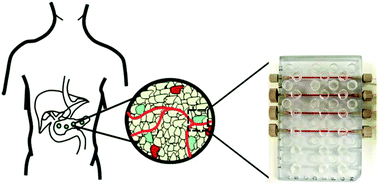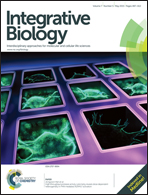C-peptide and zinc delivery to erythrocytes requires the presence of albumin: implications in diabetes explored with a 3D-printed fluidic device†
Abstract
People with type 1 diabetes (T1D) must administer insulin exogenously due to the destruction of their pancreatic β-cells. Endogenous insulin is stored in β-cell granules along with C-peptide, a 31 amino acid peptide that is secreted from these granules in amounts equal to insulin. Exogenous co-administration of C-peptide with insulin has proven to reduce diabetes-associated complications in animals and humans. The exact mechanism of C-peptide's beneficial effects after secretion from the β-cell granules is not completely understood, thus hindering its development as an exogenously administered hormone. Monitoring tissue-to-tissue communication using a 3D-printed microfluidic device revealed that zinc and C-peptide are being delivered to erythrocytes by albumin. Upon delivery, erythrocyte-derived ATP increased by >50%, as did endothelium-derived NO, which was measured downstream in the 3D-printed device. Our results suggest that hormone replacement therapy in diabetes may be improved by exogenous administration of a C-peptide ensemble that includes zinc and albumin.


 Please wait while we load your content...
Please wait while we load your content...